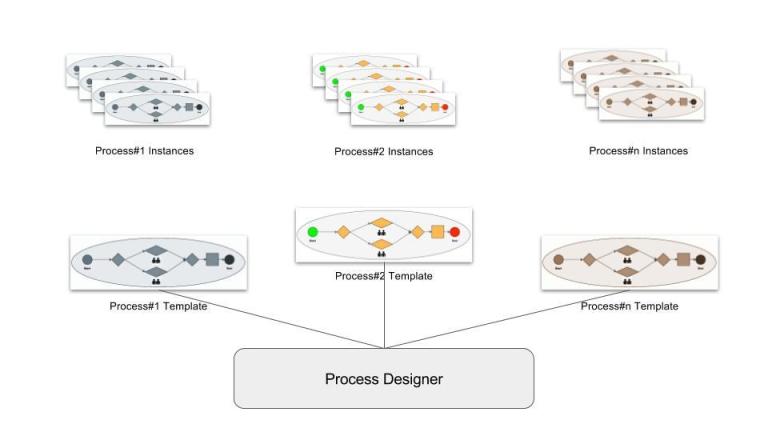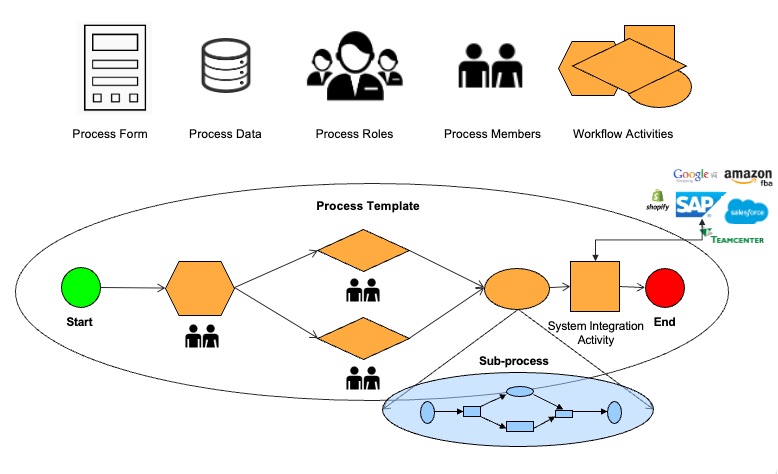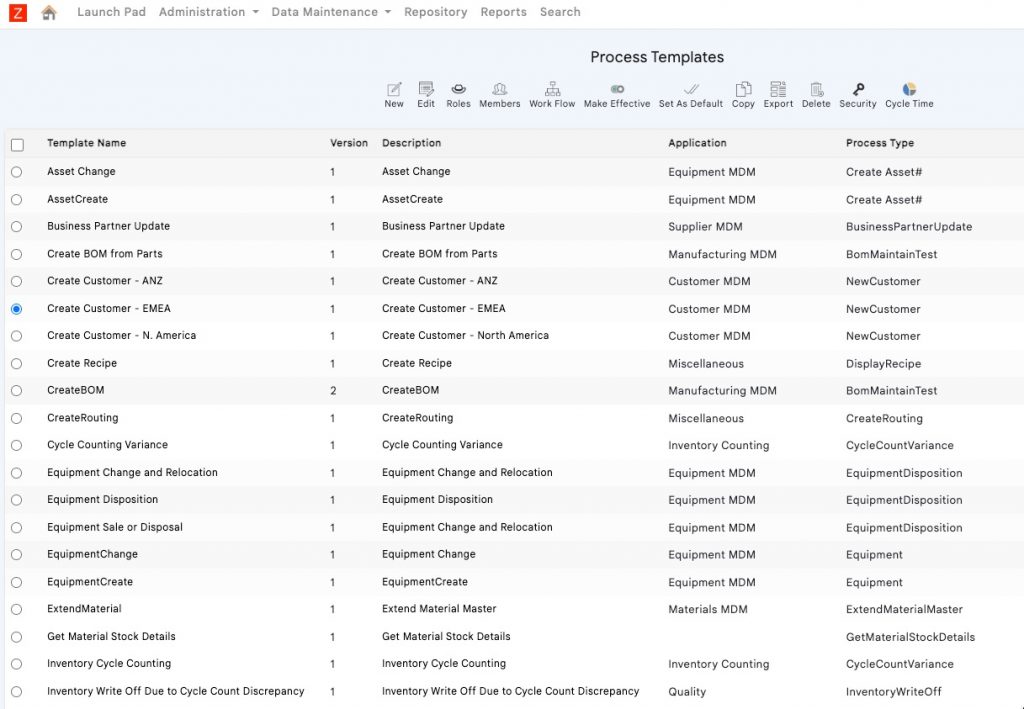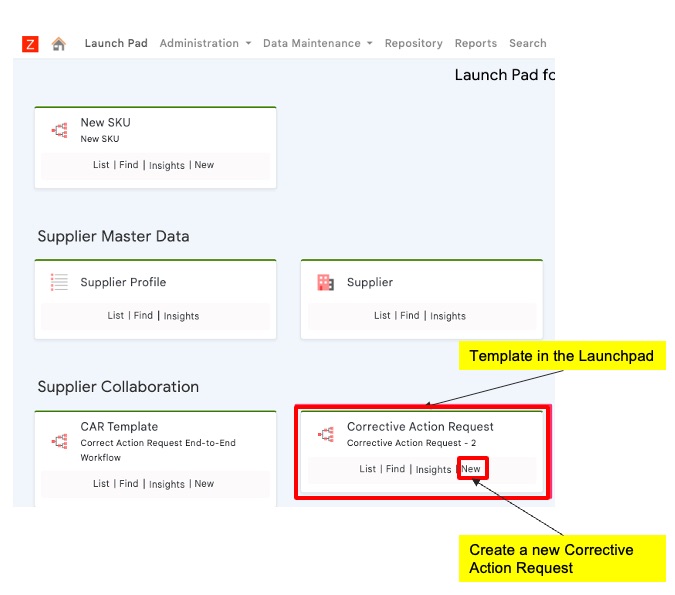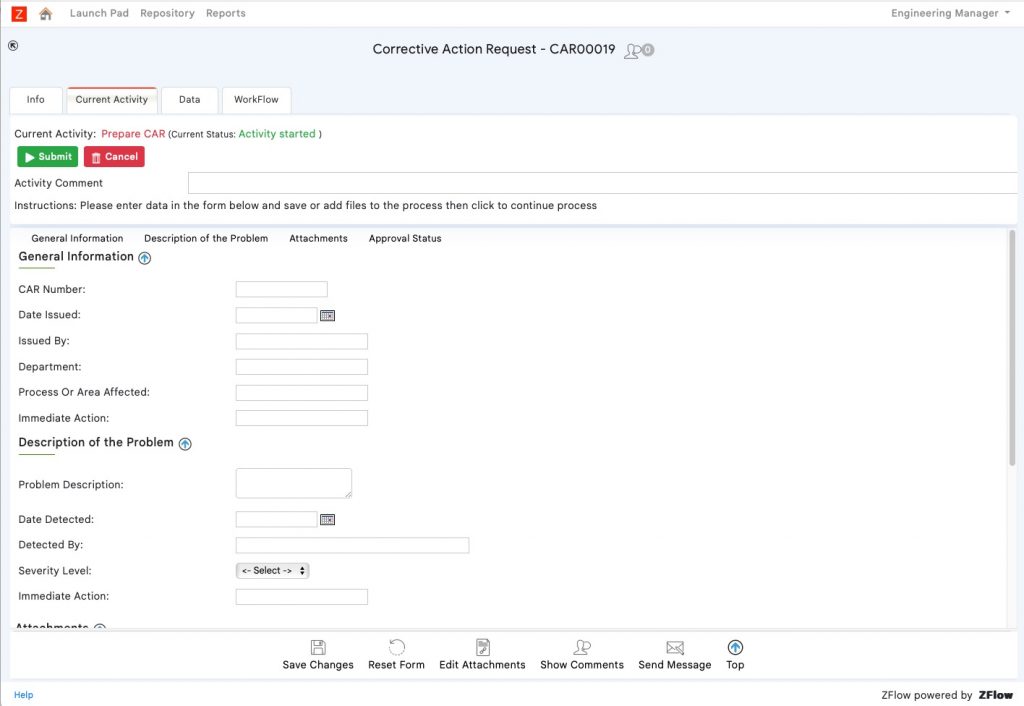This section covers key concepts related to workflow management in ZFlow. The following picture provides a high level view of how business process (aka workflow) management works in ZFlow.
Administrators in ZFlow can use Process Template Designer to create process templates. We will come to process templates shortly in the next section. Users with appropriate authorizations can use process templates to generate process instances.
For example, if the company has a defined process for corrective action requests, the process template designer can be used to create a template for this process. Once the appropriate process template for corrective action requests is designed and made effective, users can use the template to create corrective action requests (instances of the corrective action request process).
Process Templates
A process template is a blueprint for how the organization should execute the process. It is made up of process activities that need to be completed. Process workflow activities can be completed by people or automated system activities. The following picture shows a high-level overview of a process template.
A process template, which is a blueprint of how the workflow should be executed and by whom, is made up of the following
- Process Form that defines the business context of the process
- Process Data includes parts/items/materials, files, and other structured data that are related to the process
- Process Roles of users that should complete workflow activities
- Process Members that are part of the workflow and taking on different process roles
- Workflow Activities (data preparation, review, approval, systems integration activities, etc.) that make up the workflow
A list of process templates is shown below.
Process instances
Process instances are actual processes that are executed based on a process template. In the example below, a Corrective Action Request (instance of the template) is created using the template.
The Corrective Action Request below was created using the Template from the Launchpad.
